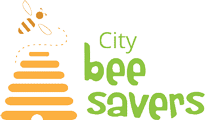2021 Newsletter – vol. 01

One set of hives will travel to California where they are welcomed into the almond trees. The other set are snowbirds to Florida enjoying an early spring.
Over 70% of U.S. honey bees travel to California for almond pollination. That’s roughly 2.4 million hives. It is fascinating to witness the amazing logistics required to make that all happen.
Some of our Florida hives are used to raise queens. We need queens to complete our spring 2021 NUCs. The rest of the snowbird hives will grow and be split to make up for winter losses.
Coming Back Together
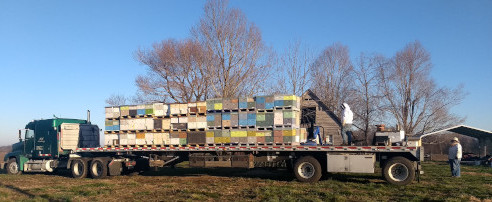 When the last of the almond petals drop the orchards begin to spray for pests and fungal diseases.
When the last of the almond petals drop the orchards begin to spray for pests and fungal diseases.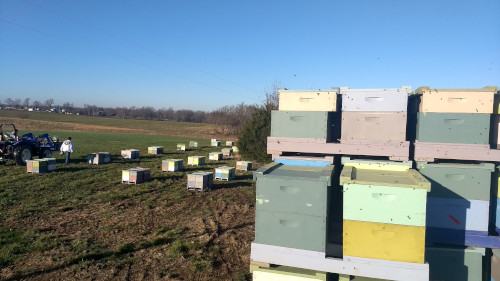
Our bees need to exit pronto. This occurs around the end of March. We whisk them off to Northern Kentucky where they met up with the returning Florida bees. They are given a week or two to calm down and adjust. It will be cold and windy in Northern Kentucky but still a week or two warmer then northern Illinois. The rapidly changing weather conditions will dictate our schedule from now until the first part of May.
NUCs are started as soon as the weather permits. This is accomplished by removing frames of brood and bees out of hives that are extra full of both. Working with the hives now can be tricky. Timing is very important. What almonds blooms lack in nectar they more then make up for with pollen. This will be the first pollen they see since the previous fall. All that new pollen and a good supply of honey prompts them up to begin brooding in earnest. By the start of April some of these colonies will want to swarm. We need to find those colonies and persuade them to change their mind.
Once the NUCs are secured we then identify the colonies that will soon have plenty of hatching brood. If all goes well we hope to conduct the first of our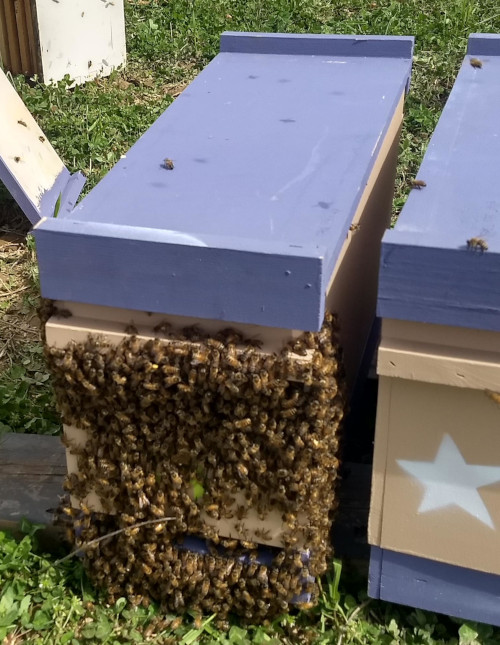 three package events by April10th.
three package events by April10th.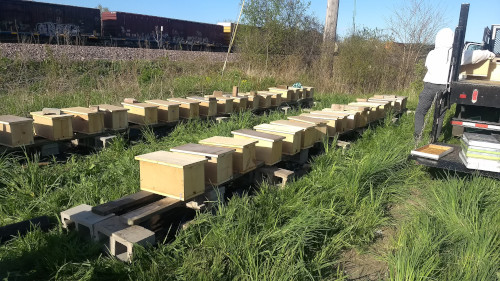
Time To Shake
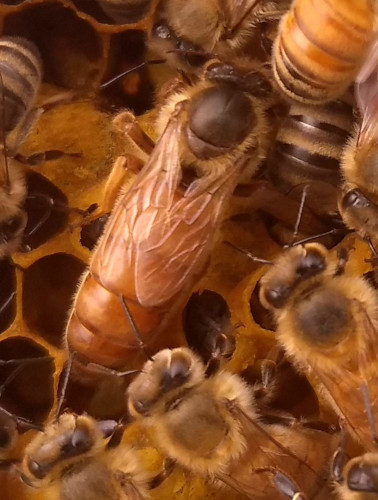 We look at the weather to find a day without rain and minimal wind. Once confident two days of calm are in front of us we set the plan into motion. The trickiest part is coordinating our queens with the shake date. You want your queens to be very fresh. They can’t sit around for several days waiting for the weather to break.
We look at the weather to find a day without rain and minimal wind. Once confident two days of calm are in front of us we set the plan into motion. The trickiest part is coordinating our queens with the shake date. You want your queens to be very fresh. They can’t sit around for several days waiting for the weather to break.
We haven’t figured out yet how to raise enough of our own queens early enough for all the packages. It is our goal. In the mean time queens need to be ordered months in advance. Constant communication takes place with the queen supplier so you are sure to have what you need, when you need it. A little sweat is trickling on the brow just now thinking about it.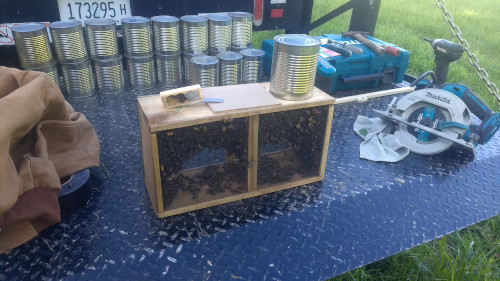
It all needs to come together, package boxes, cans of syrup, queens (marked and unmarked), and a myriad number of other odds and ends.
The day prior to the shake we go through all of our hives and locate the queens. We'll either place her in a queen box or contain her in the lower box with a queen excluder. We don't want to shake our nice laying queen into a package that will already have a queen.
I've watched several other operations shake bees. The easiest method doesn't require locating the queen. It does save time but is also responsible for killing or injuring a number of queens. We opt for the queen safe but more time consuming method.
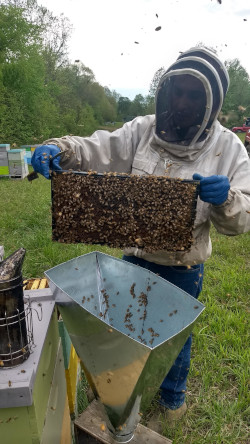
With the queen secure we now can go through each hive and choose frames with lots of young bees to shake into boxes.

Each box is weighed, the queen box is added, a can of syrup inserted, and a lid is stapled over. Now ready for travel.
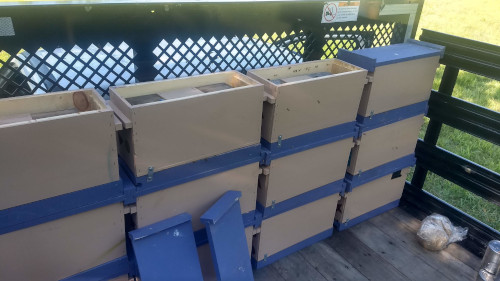
We carefully pack each package for travel and drive through the night to provide you the freshest bees available.
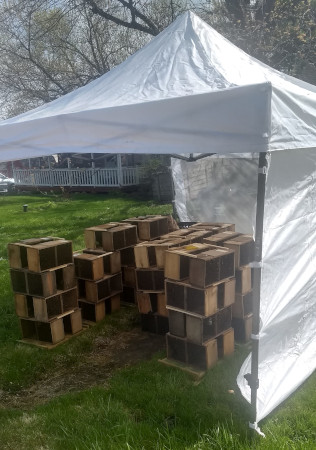
Finally, here they are ready for pick-up. If you've ordered bees from us you'll receive an email one week prior. We set up a web page that provides all the pick-up times and details. See you this spring.
